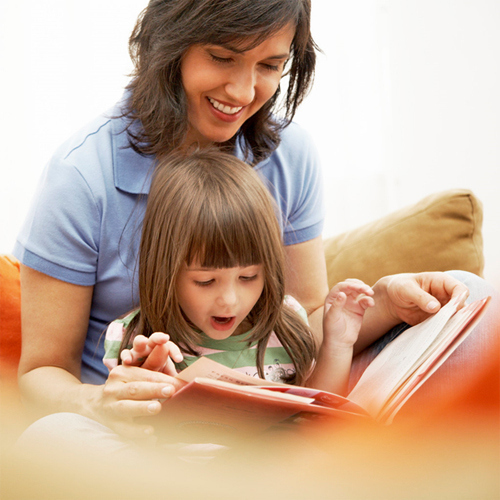Don M. Winn's Blog, page 23
April 16, 2015
Present Verses Future Orientation: What the Marshmallow Test can Teach us Today
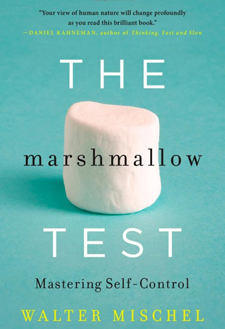 I recently discussed the role of teaching self-control and the ability to delay gratification as it relates to ourselves and our children. I wanted to dig a little deeper to gain a better understanding of this topic. And how interesting it has been.
I recently discussed the role of teaching self-control and the ability to delay gratification as it relates to ourselves and our children. I wanted to dig a little deeper to gain a better understanding of this topic. And how interesting it has been.
Many of us have heard of the so-called “marshmallow test.” Dr. Walter Mischel administered this test to 4-year-olds at Stanford University in the 1960s. The test was simple: each child was given a marshmallow and was told that they could eat the marshmallow whenever they wanted, but if they could wait to eat the marshmallow for twenty minutes, they would be rewarded with a second marshmallow. While many children ate the marshmallow the minute the adult left the room, others were able to delay gratification. Some even used self-distracting strategy to do so, which included averting their gaze, pulling their hair, squirming around, or smelling the treat but not handling it.
Conclusion: even four-year-olds are able to delay gratification.
Later, when the participants were 18 years old, they were reevaluated. The results were remarkable. The impulsive children were more moody, tended to overreact to frustration, were indecisive, and were prone to jealousy and envy. The more self-controlled children scored an average of 250 points higher on the SATs, were more cooperative, earned considerably more money, worked well under pressure, and were more self-reliant and confident.
But why could some children delay gratification, while others could not? One part of the answer seems to be genetics. However that does not mean that impulsively inclined people are doomed to failure. Genes are not destiny: willpower is a cognitive ability, and cognitive abilities can be learned and used to override undesired tendencies.
Mischel describes two systems in the brain that impacted choice and action: hot (or limbic) and cold (or prefrontal cortex). The hot system focuses on immediate rewards or threats (the present) while the cold system analyzes outcomes and has a more future orientation.
If we suspect that our child has a present orientation rather than a future orientation, what can we do to support the development of healthy self-control?
Create ���When, Then��� rules. When you pick up your toys, then we’ll read a story. When you feel frustrated with your homework, come get me and we’ll discuss it.
Help your child focus on consequences. When offered with choices, remind the child of the consequences of each choice so that they can make a more informed decision. To use a literary reference, does your child want to be a grasshopper or an ant?
Create distance from temptation. If temptation is more abstract, it will be easier to resist. For example, Sesame Street used a storyline with Cookie Monster wherein he wanted to join the Cookie Connoisseur Club. However, to become a member, he had to learn to wait for his cookies. He ‘framed’ the cookie, pretending that it was just a picture (because you can’t eat a picture). He also imagines that the cookies are smelly fish, since he wouldn’t be tempted to eat smelly fish.
Keep your promises to your child. All too many children are growing up with absentee parents or in unpredictable environments in which promises are made but not kept. Given that experience, the young mind would reason that they should grab whatever is at hand rather than wait for something that probably won’t show up anyway.
Offer support, but don’t over-control. If your child is having difficulty reasoning on a choice, patiently walk them through the consequences of each option. Impatience will undermine the child’s developing self-control skills. Demonstrate your confidence in their ability to make a good choice.


April 9, 2015
The World According to Calvin and Hobbes
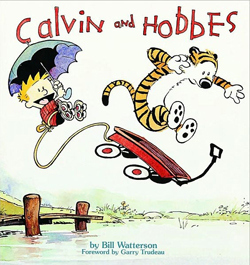 I don’t know about the rest of you, but I miss the comic strip Calvin and Hobbes. Though it was only a part of my life for 10 years, from 1985 through 1995, the incorrigible little misfit and his stuffed tiger left a lasting impression. So I was really excited the other day to see a news article in the Wall Street Journal about the comic.
I don’t know about the rest of you, but I miss the comic strip Calvin and Hobbes. Though it was only a part of my life for 10 years, from 1985 through 1995, the incorrigible little misfit and his stuffed tiger left a lasting impression. So I was really excited the other day to see a news article in the Wall Street Journal about the comic.
The article referred to late political scientist James Q. Wilson, who described Calvin and Hobbes as ���our only popular explication of the moral philosophy of Aristotle.��� Wilson was referring to the fact that social order is founded on self-control and delayed gratification. The writer points out that one of Calvin’s defining characteristics is that he is unburdened by these attributes.
Self-control and delayed gratification are not popular attributes. Certainly we are not born with them, but in order to become a part of the fabric of society, we must learn to embrace them and practice them on a regular basis. Unfortunately, they are among some of the hardest things to teach our children.
Article writer Christopher Caldwell points out that Calvin thinks “life should be more like TV” and that he is “destined for greatness” whether he does his homework or not. Indeed almost every strip shows Calvin confronted with the fact that the world does not conform to his specifications.
This is something that most children begin to realize at a fairly young age, and the budding awareness in a child that he or she is not the center of the universe demands a response from parents. Ideally, parents can nurture this awareness into a sense of responsibility in their children regarding the consequences of their actions and how they affect others. By word and example, parents can help children use this growing awareness to gain an increased sensitivity to the feelings and needs of others. This is of course, an ideal outcome, but it is not a given.
When Calvin faced any kind of physical or emotional discomfort, such as, for example, any kind of delayed gratification, his response was to push back against it, to reject it firmly. And that is so representative of human nature. We hate discomfort, struggle, and difficulty, and would prefer a world where these things don’t exist. But unless we are Spaceman Spiff, they are part and parcel of life on this planet, and we (eventually) learn to cope and scrape along. And hopefully, we work hard to model self-control and delayed gratification for the next generation and those to come.
Easier said than done? Absolutely. So check back next week for some tips on how parents can help their children develop healthy, age-appropriate levels of self-control.


March 26, 2015
Back to Basics
 Back in 1966, a high school teacher named Eliot Wigginton conceived a project to get his students engaged in writing. The project took the form of a self-published magazine made up of interviews of family members and local citizens, with a focus on how living had changed in their lifetime. The environment also played a role���the school is located in southern Appalachia, an area rich in folklore, oral histories, handicrafts, and self-sufficiency skills. The students��� magazine featured interviews and first-person narratives that contained instructions on how to do things and wilderness survival skills as well as the history and experiences of local residents. It was named Foxfire, after the bio-luminescent fungus indigenous to northern Georgia.
Back in 1966, a high school teacher named Eliot Wigginton conceived a project to get his students engaged in writing. The project took the form of a self-published magazine made up of interviews of family members and local citizens, with a focus on how living had changed in their lifetime. The environment also played a role���the school is located in southern Appalachia, an area rich in folklore, oral histories, handicrafts, and self-sufficiency skills. The students��� magazine featured interviews and first-person narratives that contained instructions on how to do things and wilderness survival skills as well as the history and experiences of local residents. It was named Foxfire, after the bio-luminescent fungus indigenous to northern Georgia.
 The Foxfire magazine is still being published today. In 1972, published anthologies of the magazine began reaching a worldwide audience.
The Foxfire magazine is still being published today. In 1972, published anthologies of the magazine began reaching a worldwide audience.
Why is this of interest to parents today?
First, the Foxfire model teaches the value of experiential education. Experiential education is defined as ���a philosophy that informs many methodologies in which educators purposefully engage with learners in direct experience and focused reflection in order to increase knowledge, develop skills, clarify values, and develop people���s capacity to contribute to their communities.���
Unlike traditional models that stress competitiveness and study in isolation, this model encourages group collaboration and keen observational and communicative work. Peer-to-peer interaction encourages each child to find their own unique voice. Continuous cycles of inquiry to refine the material and its understanding help students reach outside their own experiences and embrace those of others. This type of model is especially beneficial for kids who have learning challenges, processing issues, and/or low self-esteem.
Second, Foxfire teaches us that connecting those who have the most to learn (youth) with those who have the most to teach (people of advanced years) creates an alchemy that is, in a word, life-changing. Contrary to socio-economic norms, where the elderly are usually invisible, this project has reached across age disparity to create a profound sense of appreciation for the self-reliance and survival skills of our forebears. During the course of the Foxfire projects, students formed deeply personal relationships with their elders. One notable example was ���Aunt Arie,��� who ���reached out to identify and love the young people who came into her home in a way that each one felt. And she loved older folks, too. She threw her arms into the air with enthusiasm when greeting a stranger. She explained, ���Can���t do hardly anythin��� I used t���do. But I can still love.������ Can any one of us alive today truly say we can afford to refuse such ready love and nurturing?
 Third, the Foxfire books remind all of us that the modern way of life is quite new on the world���s scene, and that familiarizing ourselves with the ���old��� ways of living helps us understand that today���s successes and modern conveniences are built on the backs of those who survived to cause our birth. Their survival skills, tenacity, know-how, and humanity survived the test of time, generation after generation. Our world today, rife with planned obsolescence, has no such track record, and that should give us pause. True, we may not be able to think of an occasion where we need to know how to skin a bear, but other skills such as gardening by the seasons, soap making, basket weaving, beekeeping, and learning about edible wild plants are both interesting and enriching pursuits.
Third, the Foxfire books remind all of us that the modern way of life is quite new on the world���s scene, and that familiarizing ourselves with the ���old��� ways of living helps us understand that today���s successes and modern conveniences are built on the backs of those who survived to cause our birth. Their survival skills, tenacity, know-how, and humanity survived the test of time, generation after generation. Our world today, rife with planned obsolescence, has no such track record, and that should give us pause. True, we may not be able to think of an occasion where we need to know how to skin a bear, but other skills such as gardening by the seasons, soap making, basket weaving, beekeeping, and learning about edible wild plants are both interesting and enriching pursuits.
Is there an older person in your circle of acquaintance whom your child could interview, learn from, and make a meaningful connection with? I���d love to hear your experiences and share them with other readers to encourage this rich learning opportunity.

March 12, 2015
Science Superheroes Investigate Genetic Links to Dyslexia
 When I was a starry-eyed kid dreaming of superheroes, I was spellbound at their ability to get the tough stuff done and get it done with style���even with wow factor. They were so unlike me. Trust me���if I wasn’t the last word in the antithesis of a superhero, then I really, really, really didn’t want to know what the last word was.
When I was a starry-eyed kid dreaming of superheroes, I was spellbound at their ability to get the tough stuff done and get it done with style���even with wow factor. They were so unlike me. Trust me���if I wasn’t the last word in the antithesis of a superhero, then I really, really, really didn’t want to know what the last word was.
As a dyslexic child in the 1960s, there wasn’t a lot of support or understanding for me or other struggling readers. When it came to picking up a book, reading, doing writing assignments, or math, things were about as un-super as could be. It seemed like there was no escaping from that unspectacular existence.
So I was encouraged today when I came across some new research being done across the pond by the good folks at the University of Oxford and King’s College London. These science superheroes are analyzing DNA to determine how genes influence learning ability in both reading and math. Their findings showed a number of areas of genetic overlap in variants that affect both skills.
It might seem overwhelming to think that we who have dyslexia or those who are parents of struggling readers not only have to deal with the stigma of a label or two (ADD, ADHD, dyslexic, learning disabled, etc.) but also have our own genes stacked against us. But the information in the article wasn’t negative in the least: rather, it held out hope.
Dr. Robert Plomin of King’s College states, “Children differ genetically in how easy or difficult they find learning, and we need to recognise, and respect, these individual differences. Finding such strong genetic influence does not mean that there is nothing we can do if a child finds learning difficult ��� heritability does not imply that anything is set in stone ��� it just means it may take more effort from parents, schools and teachers to bring the child up to speed.”
In other words, what nature has dealt, nurture can help conquer.
Dr Oliver Davis (UCL Genetics), said: “We looked at this question in two ways, by comparing the similarity of thousands of twins, and by measuring millions of tiny differences in their DNA. Both analyses show that similar collections of subtle DNA differences are important for reading and maths. However, it’s also clear just how important our life experience is in making us better at one or the other. It’s this complex interplay of nature and nurture as we grow up that shapes who we are.” (Italics added).
Takeaway: no matter what the gene, label, or diagnosis, we can all discover ways to thrive and reach our potential. How worthwhile it is for parents and teachers to demonstrate love, compassion, and patience as we support and encourage the next generation of young superheroes!

February 26, 2015
Life Is Like—A Cookbook?
Cooking is quite an affair at my house. My wife loves to cook, loves experimenting with exotic spices and cuisines. She also loves reading about cooking and, to that end, she has *gasp* probably hundreds and hundreds of cookbooks. I’m  not exactly sure how many she has, and I probably don’t want to know, but our home is jam-packed with well-loved books stuck in every possible nook and cranny.
not exactly sure how many she has, and I probably don’t want to know, but our home is jam-packed with well-loved books stuck in every possible nook and cranny.
Sometimes I wonder how someone can possibly need or use that many cookbooks. My mom had only one recipe book when I was growing up, and we never went hungry. Now that I think about it, most of the things my mom prepared didn’t come from a book at all; rather they came from family recipes passed down in verbal form or hand-scribbled on scraps of paper.
Recently I came across food writer and cookbook author Diana Henry’s blog. Let me begin by saying that Ms. Henry has our family beat in the shelved book department—her tomes number around four thousand. Those are mostly cookbooks, you understand. That’s a 4 followed by three zeroes. Thassalotta cookbooks.
She writes: “At one point my (now) ex-husband and I stood on the landing of our home, the shelves of which housed about 4,000 books, most of them cookbooks. ‘Really you have to get rid of some of them. There’s just too many,’ he said. I was amazed that somebody could ask me to do this. It was almost as if he’d said ‘Get rid of your past.’ Because to me these weren’t just books. They were loved and used, but they were also, in a way, a map of my life.” (Italics added)
To me, this idea was both intriguing and poignant. Why do we buy one book and not another? Why do we keep some and not others? Indeed, why do many of us keep precious books our whole lives? Why do we never tire of re-reading old favorites?
Because the written word, the power of story, and the power of association combine to mark moments in our lives. Just like certain songs can have the power to whisk you back in time for a moment, our history, feelings, actions, and memories can be triggered by books. For example, what memories do you have of books you read in elementary school? In high school? What else was happening in your life at the time you read that seminal book that made one memory inseparable from another?
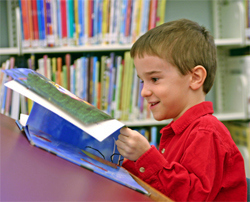 Books that comforted us in the past may be just the ticket after a bad week. Books we struggled through or didn’t like as youths (Ethan Frome and Old Yeller come to mind for me) can gain dimension and depth for us after a few decades of life experience.
Books that comforted us in the past may be just the ticket after a bad week. Books we struggled through or didn’t like as youths (Ethan Frome and Old Yeller come to mind for me) can gain dimension and depth for us after a few decades of life experience.
Books can change us. They can change our mind, our point of view, our perspective, our attitude. They can give us hope, or make us weep. Once written, words don’t change, but as we change, so can our experience with a book.
Books offer us a way to count our days, to recall and organize our memories, and to figure out who we are and who we might become. As parents, we want our children’s lives to be rich with stories and imagination, so we share stories with them via lap reading from a very young age. In other words, most families ‘map’ their child’s earliest years with shared reading.
I found Ms. Henry’s perspective to be a good reminder that reading books throughout our lifetimes is an important way of connecting with our pasts. By extension, reading books together with your children is a wonderful way to create shared landmarks in the map of your lives. You and your children will never be too old to read together and make more shared memories.

Life Is Like���A Cookbook?
Cooking is quite an affair at my house. My wife loves to cook, loves experimenting with exotic spices and cuisines. She also loves reading about cooking and, to that end, she has *gasp* probably hundreds and hundreds of cookbooks. I’m  not exactly sure how many she has, and I probably don’t want to know, but our home is jam-packed with well-loved books stuck in every possible nook and cranny.
not exactly sure how many she has, and I probably don’t want to know, but our home is jam-packed with well-loved books stuck in every possible nook and cranny.
Sometimes I wonder how someone can possibly need or use that many cookbooks. My mom had only one recipe book when I was growing up, and we never went hungry. Now that I think about it, most of the things my mom prepared didn’t come from a book at all; rather they came from family recipes passed down in verbal form or hand-scribbled on scraps of paper.
Recently I came across food writer and cookbook author Diana Henry���s blog. Let me begin by saying that Ms. Henry has our family beat in the shelved book department���her tomes number around four thousand. Those are mostly cookbooks, you understand. That’s a 4 followed by three zeroes. Thassalotta cookbooks.
She writes: “At one point my (now) ex-husband and I stood on the landing of our home, the shelves of which housed about 4,000 books, most of them cookbooks. ���Really you have to get rid of some of them. There���s just too many,��� he said. I was amazed that somebody could ask me to do this. It was almost as if he���d said ���Get rid of your past.��� Because to me these weren���t just books. They were loved and used, but they were also, in a way, a map of my life.��� (Italics added)
To me, this idea was both intriguing and poignant. Why do we buy one book and not another? Why do we keep some and not others? Indeed, why do many of us keep precious books our whole lives? Why do we never tire of re-reading old favorites?
Because the written word, the power of story, and the power of association combine to mark moments in our lives. Just like certain songs can have the power to whisk you back in time for a moment, our history, feelings, actions, and memories can be triggered by books. For example, what memories do you have of books you read in elementary school? In high school? What else was happening in your life at the time you read that seminal book that made one memory inseparable from another?
 Books that comforted us in the past may be just the ticket after a bad week. Books we struggled through or didn’t like as youths (Ethan Frome and Old Yeller come to mind for me) can gain dimension and depth for us after a few decades of life experience.
Books that comforted us in the past may be just the ticket after a bad week. Books we struggled through or didn’t like as youths (Ethan Frome and Old Yeller come to mind for me) can gain dimension and depth for us after a few decades of life experience.
Books can change us. They can change our mind, our point of view, our perspective, our attitude. They can give us hope, or make us weep. Once written, words don’t change, but as we change, so can our experience with a book.
Books offer us a way to count our days, to recall and organize our memories, and to figure out who we are and who we might become. As parents, we want our children’s lives to be rich with stories and imagination, so we share stories with them via lap reading from a very young age. In other words, most families ‘map’ their child’s earliest years with shared reading.
I found Ms. Henry’s perspective to be a good reminder that reading books throughout our lifetimes is an important way of connecting with our pasts. By extension, reading books together with your children is a wonderful way to create shared landmarks in the map of your lives. You and your children will never be too old to read together and make more shared memories.

February 12, 2015
Superhero Honored with 2014 Best of the Year Award
Just wanted to share some good news today. The Family Review Center recently contacted me to let me know that they had reviewed two of my picture books. I was so pleased to learn that they had awarded Space Cop Zack, Protector of the Galaxy by Don M. Winn a Family Review Center Seal of Approval for its “pages and pages of imagination extravaganza!” Thank you so much for the thoughtful review!
I was even more thrilled to learn that they had awarded my picture book Superhero the Seal of Approval, the Gold Award, and a 2014 Best of the Year Award because “with this story, [children] will realize that anyone can be a hero, not just men in capes. By helping someone in need, you become a hero.”
Click the links below to read the full reviews. Thanks again to the Family Review Center.

 ��������������������������������
�������������������������������� 
Both books are available from either Amazon or BarnesandNoble.com.

February 5, 2015
Lessons from Patrick Otema
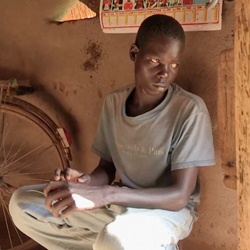 I recently viewed a 4-minute YouTube video about fifteen-year-old Patrick Otema, who was born deaf. Patrick lives in a remote area of Uganda where there aren���t any schools for the hearing impaired.
I recently viewed a 4-minute YouTube video about fifteen-year-old Patrick Otema, who was born deaf. Patrick lives in a remote area of Uganda where there aren���t any schools for the hearing impaired.
Patrick never had a conversation with anyone in his life. I can���t imagine not having the gift of language. What would 15 years of isolation, frustration, and unexpressed emotional need feel like? It staggers the imagination to contemplate.
This video tugs deeply at my heart. In it we get to see the immediate change (almost, I would say, a resurrection) in young Patrick when he first starts to communicate with sign language. I have to admit that there are not too many things at this stage of my life that make me verklempt, but this touching film definitely brought tears to my eyes. I suspect that few would be unmoved by this young man’s story.
Contemplating the importance of communication in our lives got me thinking: it’s not just hearing-impaired children who have challenges with communication and learning and who feel a sense of isolation. And while I am certainly not putting dyslexia on par with hearing loss as a disability, it is a life-long processing problem that requires a great deal of effort and tenacity on the part of the sufferer.
What made the difference for Patrick was having a school and a teacher specifically tailored to his needs. A simple, positive learning environment set up specifically for the hearing impaired caused an instant change in Patrick. Adding a qualified teacher who understood first-hand the demands and isolation of his soundless, speechless domain was key to unlocking the mind and awakening hope in this young man. Profound lifelong isolation was replaced by a new life with new possibilities. He became part of a community, one with a voice and a new identity.
Likewise, the dyslexic student requires certain accommodations to allow for the slower processing of educational material, as well as encouragement and support from knowledgeable educators and parents. Children with processing problems often feel a deep sense of isolation and even shame, not understanding their struggle for what seems to come so easily to others.
In this part of the world, thankfully, schools are available to all, even those with very special needs like those without sight or hearing. However, the availability of schools does not preclude any child (especially one with processing issues) from falling through the cracks of the educational system.
One of the most worthwhile endeavors parents can take on is school involvement. Are processing challenges suspected in your child? Demand an educational plan to address your child’s particular style of learning. Confer with teachers, counselors, and school administration to determine the best approach to your child’s education so that learning is optimized. Stay in touch regularly with the educational team to monitor for possible behavioral issues (a sign of frustration), avoidance tactics, or missed assignments. Such symptoms often point to areas that need attention. When dyslexic students have favorable learning environments, their quality of work goes up, and frustration level goes down. Accomplishing this requires effective communication between school system, parent, and child.
Just like Patrick, all children need to find their ���voices,��� form their identities, feel understood, and feel like part of a community. Let’s all be as proactive as possible to help make this a reality.
Don’t miss the video: http://www.lifebuzz.com/sign-language/

January 22, 2015
It’s All About the Horizon
 I live in Austin, TX, where there has been fairly consistent growth for the last few decades. Don’t get me wrong, growth is a good thing���it means jobs and a stable economy. But our traffic certainly reflects growth too. Life can easily settle in to a daily routine that sandwiches long hours of work between two taxing commutes.
I live in Austin, TX, where there has been fairly consistent growth for the last few decades. Don’t get me wrong, growth is a good thing���it means jobs and a stable economy. But our traffic certainly reflects growth too. Life can easily settle in to a daily routine that sandwiches long hours of work between two taxing commutes.
Before you know it, years can slip past. It’s very subtle, the way this phenomenon can sneak up on you. And for today’s youth, going outdoors is all too often not even a consideration. Instead, eager anticipation is engendered waiting for the next incarnation of favorite video games and other technological pursuits.
I recently became acquainted with Jannifer Powelson, a naturalist from the Midwest. Jannifer works in conservation and education. She has written several lovely books for kids that feature artwork as well as her own photography of flora indigenous to the prairie and the American Midwest.
 Jannifer���s writing reflects her passion and respect for the natural world. I found the books to be relaxing to read, as I followed her two main anthropomorphic characters around on their hikes and nature walks. The photos especially evoke a deep sense of place, revealing the quiet beauty and majesty of the oceans of grasses and flowering plants that can stretch for miles to the horizon. I pictured the near-sentience of seas of sunflowers turning their faces to follow the sun. The shots of the waving grasses undulating in the wind brought to my mind scenes from Dances With Wolves where people had 360 degree views of miles of golden prairie as they ventured west.
Jannifer���s writing reflects her passion and respect for the natural world. I found the books to be relaxing to read, as I followed her two main anthropomorphic characters around on their hikes and nature walks. The photos especially evoke a deep sense of place, revealing the quiet beauty and majesty of the oceans of grasses and flowering plants that can stretch for miles to the horizon. I pictured the near-sentience of seas of sunflowers turning their faces to follow the sun. The shots of the waving grasses undulating in the wind brought to my mind scenes from Dances With Wolves where people had 360 degree views of miles of golden prairie as they ventured west.
We miss seeing the horizon in urban areas unless we make a concerted effort to find new vantage points, which often means getting out of town for a day. Without that sense of space and perspective, we don’t feel the same relationship with our beautiful planet. We don’t have opportunities to gain a sense of spatial perspective about ourselves either. The times I’ve been able to get away into wilderness areas in Alaska, Colorado, California, or Nova Scotia have been replete with magical, meaningful, majestic moments. It’s like hitting the ‘reset’ button on a malfunctioning appliance: suddenly, everything that was jammed up becomes fluid and functional again.

Scenes from my visit to Alaska.
 Being surrounded by nature makes for literal breathing room.
Being surrounded by nature makes for literal breathing room.
In addition, many children don���t realize that the broccoli, corn, or apples we purchase don’t magically appear at our corner Mega-Mart. Rather, we rely on our planet’s renewable resources to provide daily necessities. If we take the time to show our youth where these foods come from, and how they grow, they become special and more appreciated. We become aware that for our planet to continue to provide for our needs, we must care for it intelligently and actively.
But, but, but��� we all have jobs and have to work full time, usually in the Big City. How on earth can we find time to get out in Nature, and teach our kids to have a healthy awareness and appreciative attitude toward our home? Stay tuned for our next blog, an interview of Jannifer Powelson. She has lots of great suggestions for parents and families to share. You won’t want to miss it!

January 16, 2015
Please Vote for Sir Kaye
Sir Kaye the Boy Knight Book One: The Knighting of Sir Kaye by Don M. Winn has been nominated for a Voyager Marble Award by the Storytellers’ Campfire radio program.
You can help. Please vote for Sir Kaye!
Here’s how:
Click the link below or address an email to admin@storytellerscampfire.org
Enter “Voyager Marble Award Vote” in the subject line.
In the body of the email, type something like “I’d like to vote for The Knighting of Sir Kaye by Don M. Winn,” or something similar. You can leave it at that, or add anything else you’d like to say about the book.
Voting ends January 30, 2015. Thank you!




